General
A Bennett’s Fracture is a fracture + dislocation of the Metacarpal bone at the base of the thumb.
The fracture involves the joint surface & is often significantly displaced. This is a highly unstable injury & occurs commonly in football.
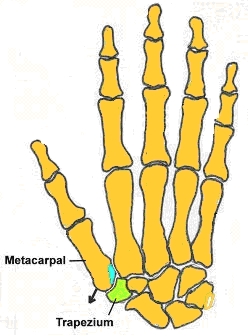
Many people think that a “fracture” is different from a “break”, but they are the same.
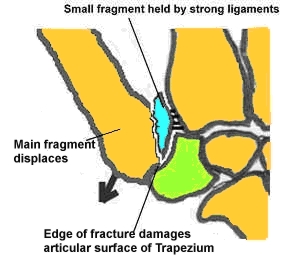
From a functional view the thumb is almost as important as the other 4 fingers put together and represents 40% of hand function. An inadequately treated Bennett’s fracture can result in an uneven joint surface at the base of the thumb & predispose to late onset arthritis in this joint. This can have a significant impact on overall hand function.
When the forces are severe the bone may end up in multiple pieces (the fracture is then called a Rolando fracture.)
When a bone breaks there is bleeding from the bone ends. Bleeding leads to swelling which results in stiffness particularly in the fingers and thumb.
Treatment of Bennett’s fracture:
“Reduction” means pulling the bones back into place. This can be done “Closed “ in which no cut is made & a plaster or splint is applied or “ Open” where a cut is performed & the bones are directly repositioned. An open reduction often requires the use of wires, plates & screws.
1. Control & reduce swelling
- Ice packs
- elevation
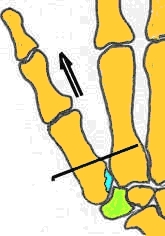
- Wire & Plaster
It is inadequate to treat this unstable fracture with plaster treatment alone. After the fracture is reduced a wire is inserted through the skin and a plaster applied.
- Advantages:
- No cut
- Less dissection of muscle
- Less risk infection
- Smaller procedure
- Disadvantages:
- Plaster for 6 weeks
- Must keep dry
- Increased stiffness
- Increased risk of late infection along wire
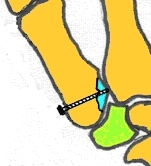
- Open Reduction
- Involves cut at base of thumb and insertion of screws &/or wires across the fracture site
- Advantages:
- Allows accurate alignment of joint surface under direct vision
- Gentle movements may be started early if screw fixation is noted to be strong at time of surgery
- Disadvantages:
- Cut over base of thumb involves muscle dissection to expose the joint
- Increased risk of injury to skin nerves
- Increased risk of early infection
An open reduction using 1 or 2 screws is usually my preferred option in treatment. At the end of the procedure the screw position is checked using a special X-ray machine in the operating theatre.
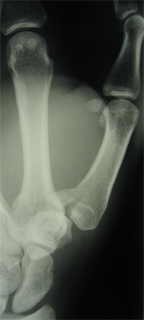
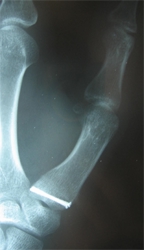
Results
- Stiffness is the commonest problem & so movement is started as soon as it is safe to do so. Please closely follow the recommendation of your surgeon & hand therapist.
- It is common for the thumb to feel weak for 6 months after this injury
- Occasionally loss of bone alignment occurs & additional treatment may be required
In general it takes 6 weeks for a hand fracture to heal & at least another 6 weeks for it to consolidate.
Modified 24 / 2 / 15
